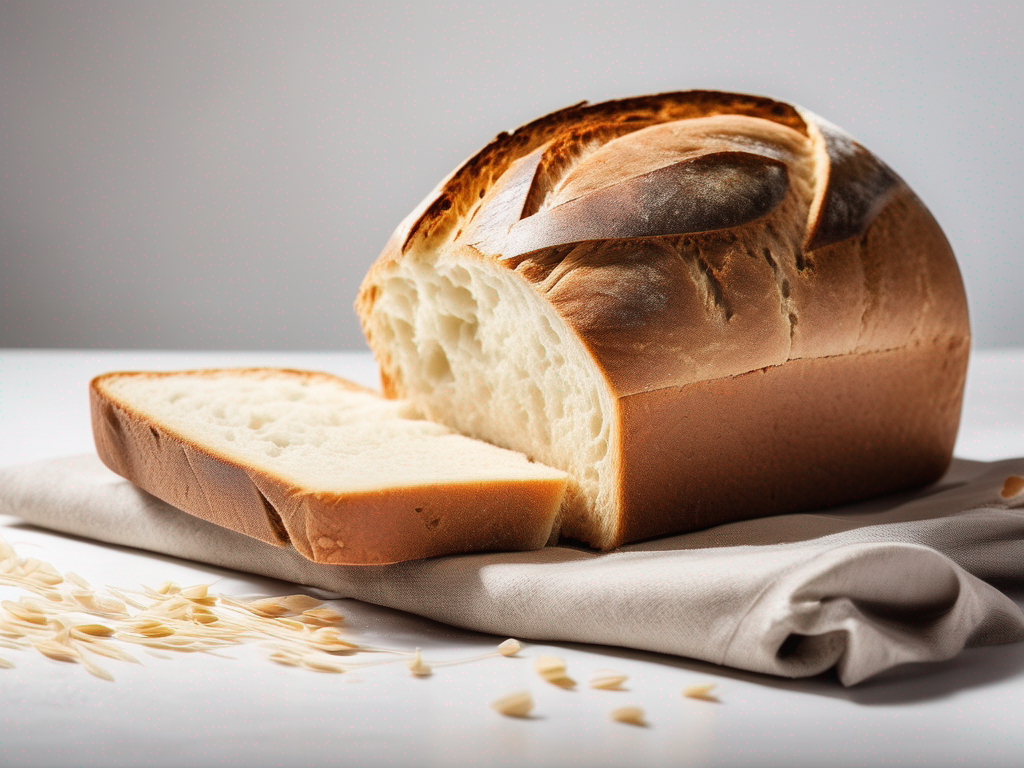
Easy Ways to Prevent Mold on Bread White Sliced Opened
Get Your Free Food Safety Cheat Sheet
30 most common foods with instant answers. Print it and stick it on your fridge—completely free!
Easy Ways to Prevent Mold on Bread White Sliced Opened
Bread is a staple in many households, but it can easily fall victim to mold if not stored properly. Mold not only ruins the taste and texture of bread but can also pose health risks if consumed. In this blog post, we will discuss some easy ways to prevent mold growth on white sliced bread that has been opened. (Bread white sliced opened)
Understanding Mold Growth on Bread
Mold is a type of fungus that thrives in warm, damp environments. When bread is exposed to moisture and air, mold spores can quickly colonize and spread, leading to the characteristic fuzzy patches of mold we often see on bread slices. Mold not only spoils the appearance and taste of bread but can also produce mycotoxins, which are harmful to health if ingested.
Factors Contributing to Mold Growth on Bread
Before we delve into prevention methods, it's essential to understand the factors that contribute to mold growth on bread:
- Moisture: High humidity levels or exposure to water can create a conducive environment for mold to thrive.
- Air Exposure: When bread is left uncovered or not properly sealed, airborne mold spores can settle on its surface and start growing.
- Temperature: Mold grows best in temperatures between 77°F and 86°F, making kitchen countertops and pantries ideal breeding grounds.
- Storage Conditions: Improper storage, such as keeping bread in a humid or warm environment, can accelerate mold growth.
Tips to Prevent Mold on White Sliced Bread
Now that we understand the factors that promote mold growth on bread, let's explore some practical tips to prevent mold and extend the shelf life of your white sliced bread:
1. Proper Storage
- Store in a Cool, Dry Place: Keep your bread in a cool, dry place away from direct sunlight and heat sources.
- Use Airtight Containers: Transfer opened bread slices to airtight containers or resealable plastic bags to minimize air exposure.
- Avoid Refrigeration: Refrigeration can make bread stale faster, but if you live in a humid climate, refrigerating bread in a sealed bag can help prevent mold.
2. Keep It Clean
- Clean Storage Area: Regularly clean and dry the area where you store your bread to prevent mold spores from settling.
- Wash Hands: Always wash your hands before handling bread to prevent transferring mold spores from your hands.
3. Freeze for Long-Term Storage
- Freeze Unused Portions: If you won't consume the bread within a few days, freeze individual slices or the whole loaf in a freezer-safe bag or container.
- Thaw Properly: When ready to eat, thaw frozen bread at room temperature or in the refrigerator to avoid condensation, which can promote mold growth.
4. Check for Signs of Mold
- Inspect Before Eating: Before consuming bread, visually inspect it for any signs of mold, such as fuzzy patches, discoloration, or a musty smell.
- Discard Moldy Bread: If you spot mold on the bread, discard it immediately along with any adjacent slices to prevent cross-contamination.
5. Rotate Stock Regularly
- First In, First Out: Practice a first-in, first-out approach when storing bread to ensure older slices are consumed before newer ones.
- Buy in Moderation: Avoid buying more bread than you can consume within a reasonable time to prevent waste and mold growth.
Conclusion
Preventing mold on white sliced bread is a straightforward task that requires proper storage, cleanliness, and vigilance. By following the tips mentioned above, you can enjoy fresh and mold-free bread for longer, saving money and reducing food waste in the process. Remember, moldy bread should never be consumed, as it can lead to health issues. Stay mindful of your storage practices, and enjoy your bread worry-free! (Bread white sliced opened)
Authoritative Food Safety References
These agencies and university labs inform every tip and health precaution we publish.
USDA FoodKeeper – Cold Storage Guidelines
Official refrigerator, freezer, and pantry timelines maintained by the U.S. Department of Agriculture.
Visit USDA FoodKeeperFDA Produce Safety Rule & Grower Guidance
Field-to-fridge handling practices that prevent contamination of fruits, vegetables, and leafy greens.
Visit FDA Produce SafetyCDC Foodborne Illness Prevention Hub
Surveillance-backed guidance on pathogens, symptoms, and steps to reduce foodborne illness risk.
Visit CDC Food SafetyUC Davis Postharvest Technology Center
University research detailing optimal storage atmospheres for produce after harvest.
Visit UC Davis PostharvestPenn State Extension – Home Food Preservation & Safety
Peer-reviewed extension bulletins on safe canning, chilling, and reheating practices.
Visit Penn State ExtensionGet Your Free Food Safety Cheat Sheet
30 most common foods with instant answers. Print it and stick it on your fridge—completely free! Want more? Upgrade to the complete guide with 70+ foods.
Scan your food directly and get instant safety info using our AI-powered camera feature.